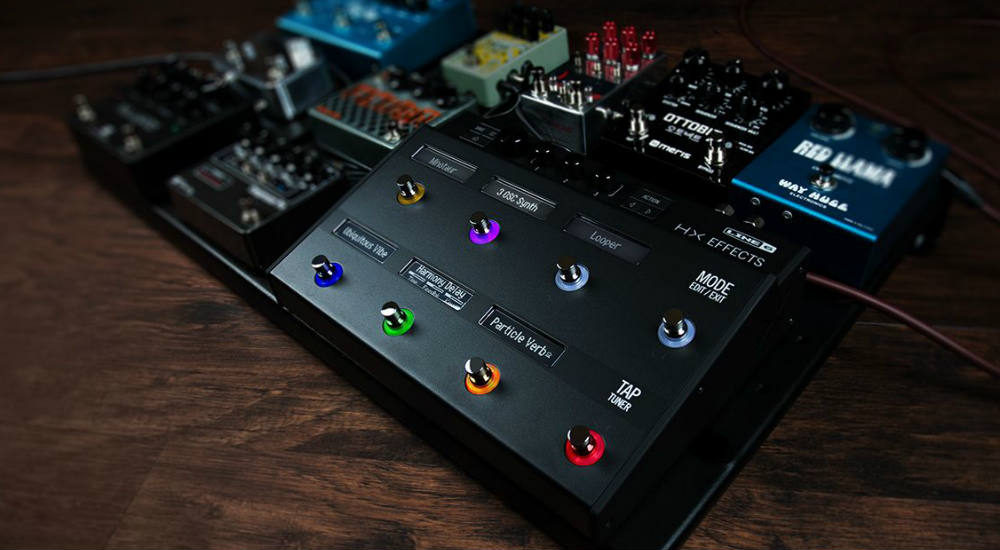While the aforementioned three brands could probably be thought of as the big guns of the modeling world (with a proven track record and countless worldwide users), many other companies have entered the arena. Mooer, Roland, HeadRush and Atomic are just a few, and these additional manufacturers have contributed towards a bigger range of price points and making modeling technology more prevalent and affordable.
Adding to the huge range of amps, effects and tones available in modelers is the flexibility and routing/switching capabilities that come with such a setup. It might not seem like much of an incentive for some, but being able to press one button and change from a clean sound with compressor and reverb to a heavy distorted lead tone with delay and phaser (for example) is amazingly handy. While there might be some learning curve with modelers, the possibilities really outweigh the initial headaches. Furthermore, most modelers also have the ability to run in ‘stomp’ mode (or something similarly named), essentially running the unit like a bunch of pedals – which might be all you need.
How/when/where do you run modelers I hear you ask? As mentioned previously, they are becoming increasingly common in both live and studio settings. For gigs and recording they can be sent direct to front of house, with you just needing foldback to hear yourself. This can be great for reducing the need for backline and stage amplification in the live setting, which can in turn create a more user-friendly stage volume and sound. FOH mixers often like this situation too as they can get a clean signal that is consistent from night to night. For your own purposes, it can save you lugging in extra gear – just drop your pedalboard or rack on stage and plug and play. For those that still like guitar cabs, you can run a modeler into a power amp and then into your speaker box of choice. If you’re still wary of going completely modeler/digital, you could even use your Helix/AX8/Mooer/HeadRush etc. for just effects and run it into your amp.
There really are a lot of possibilities and varied lines of thinking regarding this topic. Like any guitar rig, I’m sure you’ll go back and forth with your tastes and decision making. Yes, there are those who argue that going direct/using a modeler can’t compete with the sound of real tubes. While that may be true (and I’m a fan of both real amps and digital modeling, for the record), there are many thoughts that counter this argument, such as ‘How much difference really exists?’ and ‘Would anyone notice anyway?’ There might also be room for the thought that some people don’t actually want a vintage valve amp tone. This is one angle that I think is often overlooked.
Either way, modeling is here to stay. If you’re apprehensive or overwhelmed with the whole concept, I’m sure there have been many other technological advances that have seemed just as daunting at first, but really weren’t that bad.

